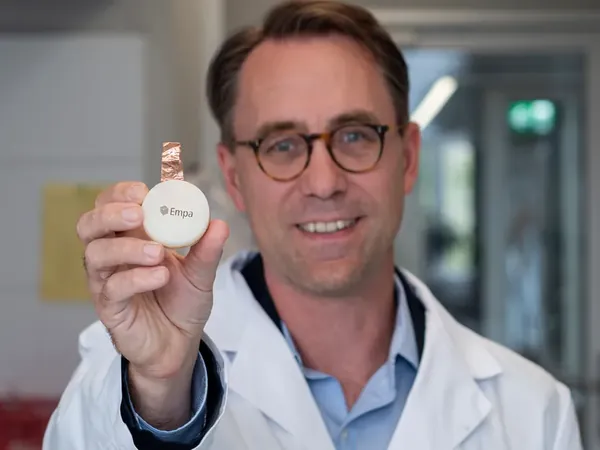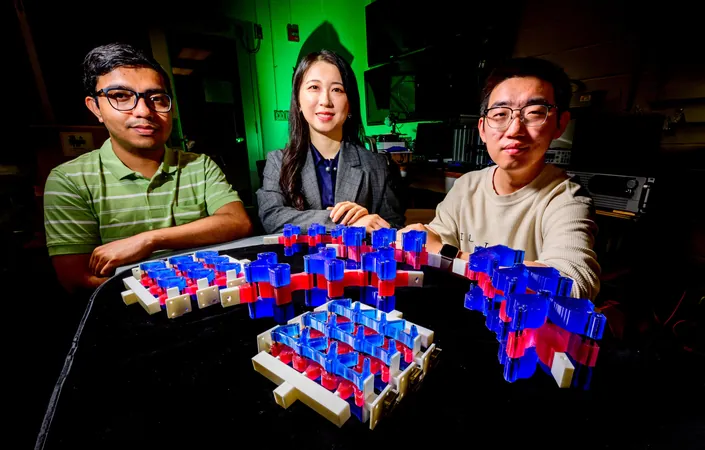
Revolutionary Fungi-Based Battery: Feed It, Don’t Charge It!
2025-04-24
Author: Noah
Harnessing Nature’s Power: The Fungal Battery Breakthrough
What if the key to sustainable energy lies in fungi? Researchers are turning the world on its head by developing a groundbreaking kind of battery that relies on living fungi and biodegradable materials, offering a renewable solution to our electric needs.
The E-Waste Crisis: A Growing Concern
The problem of electronic waste is spiraling out of control, with predictions estimating nearly 75 million metric tons by 2030! Most of these toxic components are non-recyclable, emphasizing the urgent demand for more eco-friendly electronics.
Nature’s Answer: Microbial Fuel Cells
To combat e-waste, scientists have looked to nature, unveiling microbial fuel cells (MFCs)—biobatteries that convert microbial metabolic activity into energy. Historically reliant on bacteria, these innovative scientists at Switzerland's Empa are now integrating fungi into this equation.
A Fungal Fusion: Creating the Battery
In a first-of-its-kind innovation, researchers have ingeniously combined two fungal species to build a biobattery. Using advanced 3D printing, living fungal cells are embedded in a cellulose-based ink that creates strong, biodegradable battery components.
How It All Comes Together
This groundbreaking device uses yeast (Saccharomyces cerevisiae) at the anode to break down sugars and release electrons, while the white-rot fungus (Trametes pubescens) captures those electrons at the cathode using special enzymes. This duo ensures efficient energy production.
A Simple Activation Process
What’s more amazing? You can store these fungal batteries in a dried state and activate them using just water and nutrients, making them ideal for remote sensing and agricultural monitoring—where electricity access might be challenging.
Why Fungi? Nature’s Hidden Gem
Fungi are incredibly versatile, breaking down complex materials through powerful enzymes. They not only facilitate energy transfer but can even produce their own electron-shuttling compounds, making them an ideal candidate for sustainable energy solutions.
Possibilities Beyond the Lab
The potential applications of MFCs are vast, stretching from wastewater treatment to powering small devices. But the Empa team’s design revolutionizes the field with its commitment to entirely biodegradable materials—no more heavy metals or harmful plastics!
A Sustainable Future Awaits
While the fungal battery is still in early development, it has already proven capable of powering low-energy sensors. Researchers are excited for future iterations that could harness even more fungal species for improved performance.
Final Thoughts: A Solution Hiding in Plain Sight
In a world grappling with climate change and pollution, these living batteries from fungi could represent a fresh, elegant answer to energy generation. With ongoing research and development, the future is ripe for sustainable electronic solutions.
Join the Movement!
This pioneering effort showcases the promising possibilities awaiting us in the realm of green energy. Researchers believe fungi are still vastly unexplored and hold untapped potential, paving the way for a cleaner, more sustainable future.









 Brasil (PT)
Brasil (PT)
 Canada (EN)
Canada (EN)
 Chile (ES)
Chile (ES)
 Česko (CS)
Česko (CS)
 대한민국 (KO)
대한민국 (KO)
 España (ES)
España (ES)
 France (FR)
France (FR)
 Hong Kong (EN)
Hong Kong (EN)
 Italia (IT)
Italia (IT)
 日本 (JA)
日本 (JA)
 Magyarország (HU)
Magyarország (HU)
 Norge (NO)
Norge (NO)
 Polska (PL)
Polska (PL)
 Schweiz (DE)
Schweiz (DE)
 Singapore (EN)
Singapore (EN)
 Sverige (SV)
Sverige (SV)
 Suomi (FI)
Suomi (FI)
 Türkiye (TR)
Türkiye (TR)
 الإمارات العربية المتحدة (AR)
الإمارات العربية المتحدة (AR)